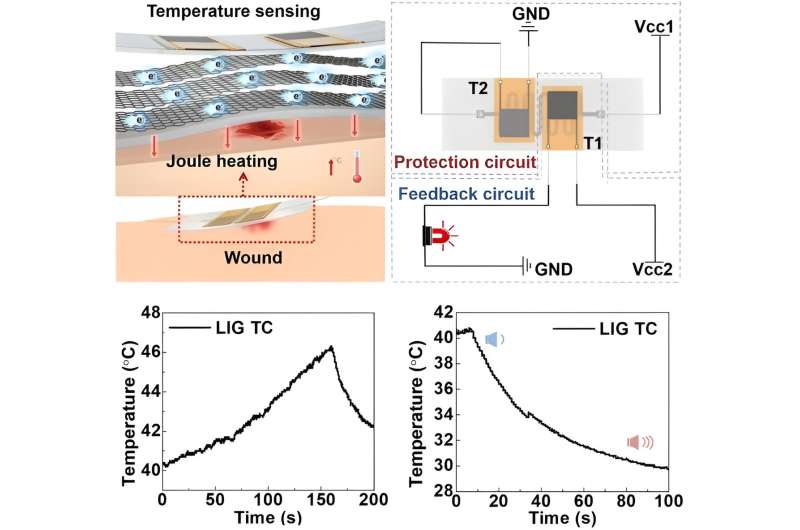A dynamically controllable strategy for healing wound tissue

Skin functions as a sophisticated sensorial system in the human body, capable not only of detecting environmental stimuli—such as temperature, pressure, strain, and vibration—but also of actively responding to these changes. Among these, the temperature regulation capability of the skin plays a critical role in maintaining the stability of homeothermic animals.
Skin injuries are inevitable in daily life and can severely impair the inherent temperature-sensing and regulatory functions. For instance, skin burns can lead to a loss of thermal feedback, resulting in additional side effects and pain.
The use of flexible fibrous materials to reconstruct the functionality of damaged skin holds significant potential in the fields of biomimetic robotics and tissue repair, particularly in restoring the skin’s capacity for temperature perception and adaptive regulation, which could significantly improve the quality of life for individuals with skin injuries.
Although electronic skin that simulates temperature sensation has been developed for biomimetic applications, most devices lack self-regulatory capabilities.
To address this, a research team led by Zhu Meifang at Donghua University has reported the development of an integrated patch that simulates skin temperature regulation, allowing for more controllable dynamic healing processes.
Zhu’s design introduces an interactive thermoregulatory biomimetic electronic system through a feedback process dependent on skin temperature. This is achieved by coordinating an external feedback circuit with an internal protective circuit, which together regulate the interaction between the thermal control unit and a thermistor.
Considering the constraints of industrial production costs, the team chose laser-induced graphene (LIG), known for its orderly texture and disordered porous structure, as the material for the temperature control unit. An acrylic copolymer was selected as the main component for the positive temperature coefficient (PTC) thermistor, demonstrating good reproducibility in tests.
Damaged skin often lacks essential temperature regulation, which can hinder the wound-healing process. Therefore, Zhu’s team opted to utilize this thermally perceptive and regulative flexible device to facilitate wound healing. Comparative studies with commercial groups have shown that the use of soft electronic materials with a low Young’s modulus in direct contact with biological tissues can minimize adverse reactions significantly.
The paper is published in the journal Nano-Micro Letters.
More information:
Yaqi Geng et al, A Skin-Inspired Self-Adaptive System for Temperature Control During Dynamic Wound Healing, Nano-Micro Letters (2024). DOI: 10.1007/s40820-024-01345-0
Provided by
Shanghai Jiao Tong University Journal Center
Citation:
Self-adaptive system for temperature control: A dynamically controllable strategy for healing wound tissue (2024, May 6)
retrieved 7 May 2024
from https://phys.org/news/2024-05-temperature-dynamically-strategy-wound-tissue.html
This document is subject to copyright. Apart from any fair dealing for the purpose of private study or research, no
part may be reproduced without the written permission. The content is provided for information purposes only.

